Summer 2024

Lahaina’s Banyan Tree
Preserving a 250 year old legacy, ensuring it endures for generations to come
Summer Color
Three varieties to try this year that won’t disappoint Gardener’s Calendar Summer is here! Expert tips to keep your yard looking its best
A guide to lawn alternatives on pg. 20
Star Nursery - Your Garden’s Partner for Every Bloomin’ Thing!
PLUS
GREENpages
Garden Centers
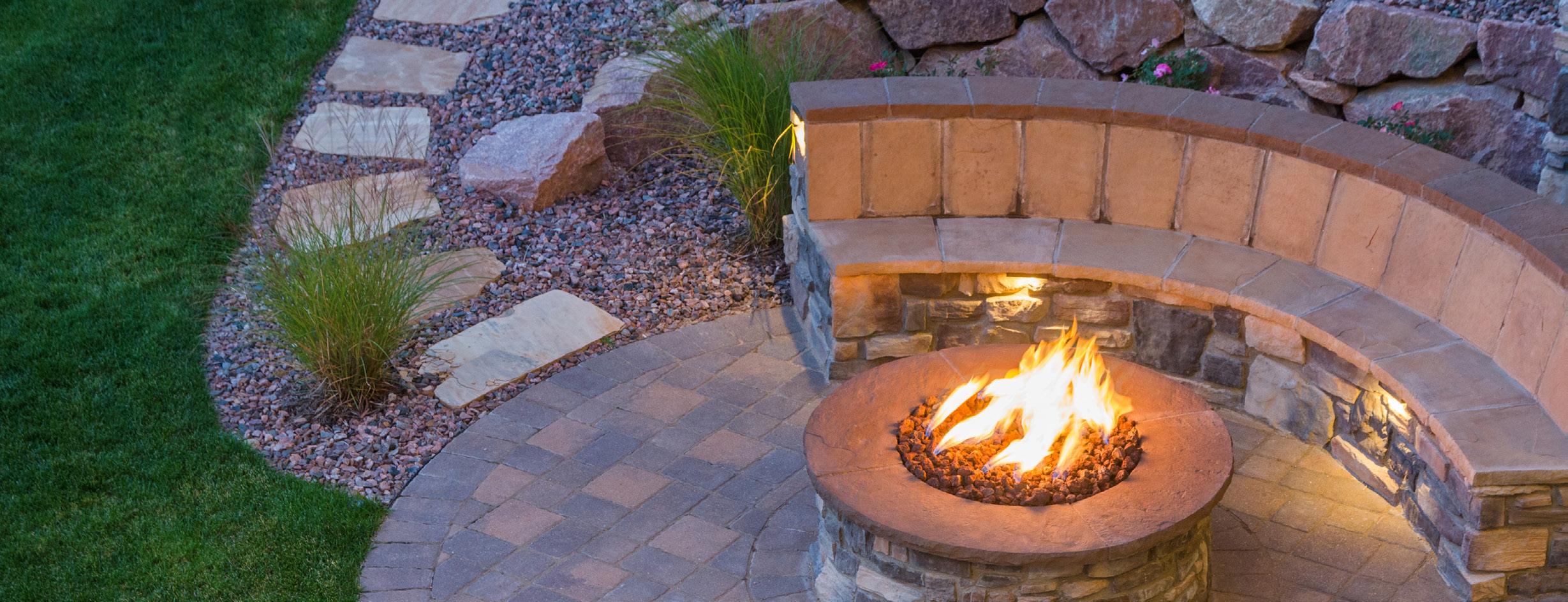
Create a maintainable and drought tolerant landscape. Use flagstone for a beautiful and unique walkway.
9 DECORATIVE ROCK YARDS
Nevada
Las Vegas
2600 W. Ann Rd. (702) 471-ROCK (7625)
5380 Blue Diamond Rd. (702) 382-ROCK (7625)
8725 S. Eastern Ave. (702) 251-ROCK (7625)
Pahrump 911 Buol Rd. (775) 775-5300
Arizona
Utah
4140 Stockton Hill Rd. (928) 757-STAR (7827)
Fort Mohave
Kingman 6325 Hwy. 95 (928) 788-STAR (7827)
Lake Havasu
1141 N. Lake Havasu Ave. (928) 505-ROCK (7625)
DELIVERY SERVICE AVAILABLE
1335 S. Dixie Dr. (435) 673-5436
Dixie 1145 W. Sunset Blvd. (435) 215-4356
St. George



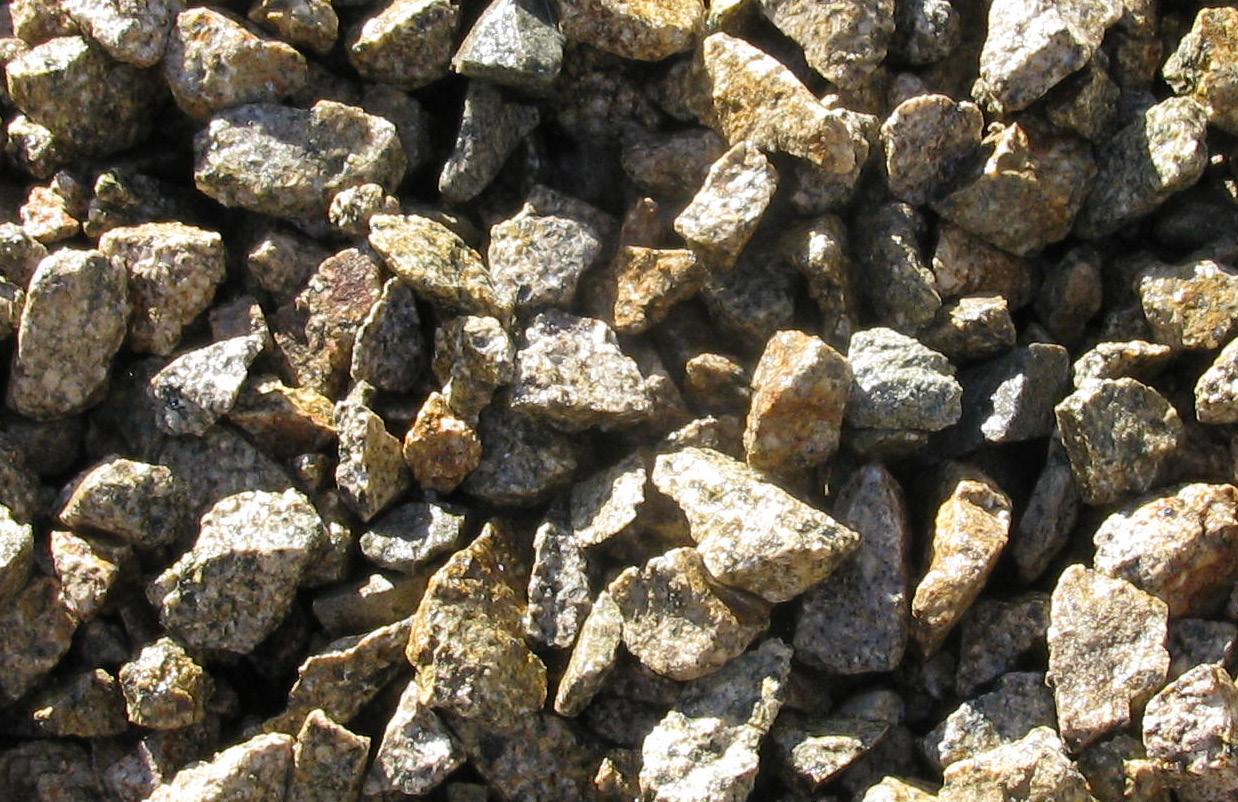
YOUR #1 SOURCE FOR DECORATIVE ROCK AND HARDSCAPES
•
•
•
•
•
•
Pavers • Flagstone
Wall Block
Stepping Stones
River Rock
Boulders
Bulk Soil
Bulk Sand
Our Staff
Art/Design Doug Ryan
Contributing Staff Kelly Davis Madalyn Watt
Horticultural Experts Joey Lynn Paul Noe
For a FREE copy of Green Pages subscribe online at www.starnursery.com
Please help us set the record straight If you are receiving the GREEN PAGES under the wrong name or address OR wish to be removed from our mailing list. Please email marketing@starnursery.com and we will fix it.
Community Partners





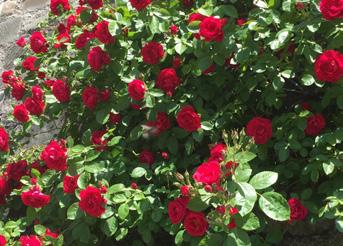
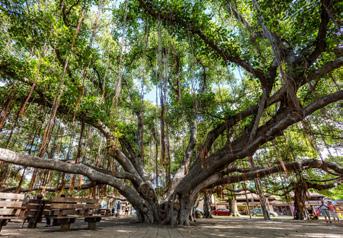



RODEO ATHLETICS
starnursery.com 3 12
16
Rebirth from Ashes: Lahaina’s Banyan Tree
08
Summer Color
14 20
Summer Gardener’s Calender & Holidays
Nevada Nurseryman
NT
TS
Exploring Lawn Alternatives
CO
EN
WITH OVER 40 YEARS OF HISTORY, STAR NURSERY IS YOUR TRUSTED PARTNER FOR GROWING BEAUTIFUL LANDSCAPES IN THE DESERT. ACROSS OUR 16 CONVENIENT LOCATIONS, WE’VE DEDICATED OURSELVES TO DELIVERING AFFORDABLE LANDSCAPE SUPPLY AND EXPERT ADVICE THAT IS TAILORED TO OUR ENVIRONMENT.

OUR HISTORY
In 1983, Craig Keough, founder and owner, noticed the absence of a convenient one-stop shop where the community could purchase affordable landscape supplies. Starting with humble origins, Mr. Keough began selling plants at his first location on the corner of Wynn Road and Tropicana. Over the years, Star Nursery has grown in tandem with the growth of the Southwest. Today, we have locations across Southern Nevada, Southern Utah, and Northern Arizona.
Our journey is marked by a commitment to ensure that the communities we serve can access the resources needed to build gardens and landscapes at a reasonable cost. We believe that beautiful outdoor spaces shouldn’t be a luxury, but a possibility for everyone.
At Star Nursery, our promise is rooted in your success. Aware of the challenges that desert gardening presents, our staff is committed to continuous learning. Through education programs, community partnerships, and the passing down of generational knowledge, we ensure that our plant experts stay up to date on the latest horticultural knowledge.
When you need advice on your landscape, view our online garden resources, stop by and chat with an expert, or schedule a one-on-one consultation!
OUR PROMISE HOUSE CALLS
If you’ve been experiencing problems in your yard and can’t seem to find a solution, call Dr. Q!
A wide range of factors can affect a plant’s health, including conditions such as sunlight, soil, water, fertilizer, insects, disease, wind patterns, and drainage. Most of the time, our in-store experts will be able to offer gardeners a solution on the spot! However, there are times when diagnosing an issue is more complex. In this case, you may require an expert to visit your home and examine the issue.
When you schedule a house call with the Dr. Q team, you’ll be receiving one-on-one advice from a Star Nursery expert. For a service fee of $90, you will receive up to one hour of consultation in your yard. To set up an appointment, please visit your favorite Star Nursery location to purchase your House Call.
4 Green Pages, Summer, 2024
LOCATIONS
Las Vegas, NV
Ann Road & Simmons 2600 W. Ann Rd. North Las Vegas, NV 89031 (702) 216-STAR (7827)
West Cheyenne & Tenaya 7330 W. Cheyenne Ave. Las Vegas, NV 89129 (702) 253-STAR (7827)
W. Charleston Blvd. & Cimmaron 8170 W. Charleston Blvd. Las Vegas, NV 89117 (702) 360-STAR (7827)
W. Tropicana & Fort Apache 9480 W. Tropicana Ave. Las Vegas, NV 89147 (702) 278-STAR (7827)
Boulder Hwy. & E. Tropicana 5340 Boulder Highway Las Vegas, NV 89122 (702) 435-STAR (7827)
S. Eastern & Pebble
8725 S. Eastern Ave. Las Vegas, NV 89123 (702) 333-STAR (7827)
Blue Diamond & Lindell
5380 Blue Diamond Rd. Las Vegas, NV 89139 (702) 444-STAR (7827)
Pahrump, NV
Buol Rd. & Hwy. 372 911 Buol Rd. Pahrump, NV 89048 (775) 727-5300
Mesquite,
NV
Commerce Cir. & Pioneer 549 Commerce Cir.
Mesquite, NV 89027 (702) 613-4770

Lake Havasu, AZ
Lake Havasu Ave. & College Dr. 1141 N. Lake Havasu Ave. Lake Havasu City, AZ 86403 (928) 505-ROCK (7625)
Kingman, AZ
Stockton Hill Rd. & Gordon Dr. 4140 Stockton Hill Rd. Kingman, AZ 86409 (928) 757-STAR (7827)
Fort Mohave, AZ
Hwy. 95 & Boundary Cone Rd. 6325 Hwy. 95 Fort Mohave, AZ 86426 (928) 788-STAR (7827)
Bullhead City, AZ
Mohave Dr. & Miracle Mile 1579 Mohave Dr. Bullhead City, AZ 86442 (928) 758-STAR (7827)
St. George, UT
Sunset Blvd. & Bluff St. 1145 W. Sunset Blvd. St. George, UT 84770 (435) 688-STAR (7827)
Dixie Dr. & Gubler Ln. 1335 S. Dixie Dr. St. George, UT 84770 (435) 674-STAR (7827)
Washington, UT
Telegraph Rd. & 500 W. 385 W. Telegraph Rd. Washington, UT 84780 (435) 986-0820




FIND TIPS ON HOW AND WHEN TO WATER AT SNWA.COM 12 MINUTES DAILY TOTAL 2-3 DAYS A WEEK SPRINKLERS DRIP
INTRODUCING THE HRC 400 CONTROLLER WITH THE B-HYVE PROTM APP.

PART # DESCRIPTION
HRC-400-WF-08 8-Station Indoor/Outdoor Controller with Wi-Fi
HRC-400-WF-16 16-Station Indoor/Outdoor Controller with Wi-Fi
SAVE WATER AND TIME
ALL FROM THE CONVENIENCE OF YOUR BACK POCKET.
Monitor, adjust and receive notifications for multiple sites from anywhere with the B-hyve ProTM app and HRC 400 smart Wi-Fi/Bluetooth controller. Now you can finally manage your landscape water usage the same way you manage everything else — from your phone. BHYVE.HYDRORAIN.COM
INSTANT 50% OFF PURCHASE PRICE W/ SNWA COUPON
Coolaroo© provides unique shade solutions to enhance your outdoor living space. GARDEN COVER
Porches
Gazebos
Fencing
Wind cover
Plant protection
Green houses






STONE
PRIVACY SCREENING PEOPLE PROTECTION 50% UV BLOCK 70% UV BLOCK 90% UV BLOCK WHEAT FOREST GREEN BLACK SANDSTONE AVAILABLE COLORS: •
•
•
•
•
•
Summer Gardener’s Calendar & Holidays

J U N E
• Mulch: June is a great time to replenish mulch layers in the garden! By doing so, you’ll help to cool the soil, suppress weeds, and retain soil moisture. An especially important area to mulch is around your vegetables, as they will require extra cool, moist soil during the hot summer months. When choosing what product to use, consider cedar mulch, as it can help keep insects away from your herbs and vegetables without the use of a pesticide. Another great option is Dr. Q’s Premium Paydirt Planting Mix, a premium grade, fully composted garden mulch. Once you have chosen your mulch, add a layer that is about 2-3” thick. When doing so, avoid placing the mulch close to flower stems, as it could cause stem rot. Similarly, avoid placing the mulch close to trunks, as it could cause crown or root rot.
• Thinning Trees: If you were not able to prune your trees during the winter months, you can still thin out your desert type trees that have grown too thick. It is especially important to do so if you are concerned that they may be damaged by summer winds or if they inhibit access to parts of your yard. Acacias, Mesquites, Olives, Sumacs, and other evergreens can benefit from selective thinning of crossing/dropping branches. Do not perform heading cuts during the hot summer season, as this encourages new growth which is too stressful in the heat and exposes young branches to damaging sun burning.
• Burnt Leaves: As temperatures get warmer, your leaves could experience leaf burn, caused by a lack of water within the plant. Without enough water to allow for evaporation, the leaf will overheat and burn. Other causes of leaf burn may be soil that is lacking sufficient oxygen, wind, and heat. If you find leaf burn in the middle of the leaf, check that the irrigation system is functioning properly and make necessary repairs. You may also consider covering exposed and/or damaged plants until there are cooler temperatures in the fall.
• Grub Treatment: Similar to March, June is another month where grubs will actively lay and grow eggs. During this time, use a granular insect killer, such as BioAdvanced Complete Insect Killer. When using, carefully spread at the base of plants that are susceptible or known to be infected. *NOTE: Be sure to read the label and instructions before using any chemical garden product.
• Planting: June is an excellent month to plant sunflower seeds and gourd seeds! Sunflowers will take 90-110 days to harvest, making them perfect additions to fall decorations. Members of the gourd (Cucurbit) family – melons, pumpkins, and squash – should be planted in June for an optimal fall harvest.
• National Rose Month
• National Pollinator Month
• National Perennial Garden Month
• National Fresh Fruit and Vegetables Month
• 2nd–8th National Garden Week
• 6th National Gardening Exercise Day
• 10th National Herbs and Spices Day
• 11th National Corn on the Cob Day
• 12th National Red Rose Day
• 13th National Weed Your Garden Day
• 16th Arborist Appreciation Day
• 16th National Fresh Vegetables Day
• 17th–23rd National Pollinator Week
• 23rd National Pink Flamingo Day
• 27th National Orange Blossom Day
• 27th National Onion Day
8
Green Pages, Summer, 2024
J U L Y
• Watering: Because of the hot, dry weather, many will make the mistake of overwatering their plants. While it might make sense to give your plants an abundance of water, you should avoid overwatering. Due to high amounts of clay, our soil does not drain and remains wet for long periods of time which will ultimately drown the root system. If a drip irrigation system is installed, make sure to water no more than every other day (unless you have sandy, rapid draining soil). A drip irrigation system will allow for deep, infrequent watering, which is beneficial to building strong roots and controlling weeds. If you have container plants, be sure to water them daily and as early in the day as possible. Water long enough that the water flows out of the bottom of the pot.
• Disease and Pest Control: When it comes to roses in the southwest, you’ll want to watch out for spider mites. If your roses are dealing with pests and nutrition issues, try BioAdvanced Rose and Flower Care. This product will deal with insects, disease, and can safely fertilize your plants all at once. If you find squash bugs, treat with Bonide Pyrethrin Garden Insect Spray. Avoid top watering of vegetables to reduce the chance for disease.
• Pines and Ash Trees: During the summer months, it is common for pine trees to have browning and dropping needles from deep within the branches due to extended periods of increasingly high summer temperatures and dry winds. To reduce late summer stress, lay a soaker hose in a spiral shape around the base of the trees, extending just outside the drip line (the area directly under the outer edge of a tree’s canopy) and soak on low for 2-4 hours, once a week. In addition to deep soaking your pines, be sure to soak your ash trees. It is important to keep your ash trees hydrated to better ward off Hendersonula toruloides (AKA sooty canker), a fungus that causes wilting and death to branches.
• Arborvitaes, Cypress, Junipers, and Pines: July is an ideal time to clean out the inside branches of arborvitaes, cypress, junipers, and pines to help prevent spider mites from establishing webbing in the branches. If a spider mite infestation goes untreated, the mites will suck on the needles and the tree will experience a loss of dark green leaf color, stunted growth and eventually death. To prevent this, clean out the inside branches by attaching a high-powered spray nozzle to a hose and spray all dead needles from within the canopy. Repeat this once a week during the summer months.
• Planting: Late July to early August, is an excellent month to plant celery, green beans, eggplant, melons, peppers, squash, and tomato seeds for an ideal fall crop! If you are planting in a full sun area, consider using a shade cloth with 50% UV protection to prevent the hot, afternoon sun from burning tiny leaves.
• Palm Trees: Much of their growing happens during the summer months. There is still time to plant, prune and fertilize palm trees. Fertilize with Dr Q’s Palm Food which is specifically formulated to fulfill the special requirements of palms and keep them growing and prevent common nutrient deficiencies. Be cautious when pruning palm trees and do not over prune. Only remove frond if they are yellow, brown, or broken. Removing more frond then a palm tree produces in one year can make the palm tree susceptible to disease.
• National Blueberry Month
• National Watermelon Month
• National Eggplant Month
• 4th Independence Day
• 7th National Build a Scarecrow Day
• 8th National Blueberry Day
• 10th National Pick Blueberries Day
• 10th National Don’t Step on a Bee Day
• 16th National Cherry Day
• 16th National Fresh Spinach Day

starnursery.com 9

A U G U S T
• Harvest Produce: During the month of August, keep on top of harvesting summer squash and tomatoes. If early picking is missed, you’ll have woody, overgrown squash, and mushy tomatoes. Depending on varieties, some apples, pears, grapes, and figs may be ready for harvest. Continue to harvest zucchini and other summer vegetables.
• Prune Summer Stressed Tomato Plants: Cut them down to one foot tall. They will eventually branch out and start producing fruit once temperatures drop below 90 degrees.
• Maintain roses: The hot summer months are the roughest time for roses, but with proper care they will come back in the fall. Keep faded flowers cut, provide the roses with a cooling layer of mulch, and give them a mild fertilizer such as Dr. Q’s Rose & Flower Food
• Watch lawn weeds. Keep an eye on broadleaf lawn weeds, (unwanted tough plants that grow in lawns like spurge, clover, crabgrass, etc.). Be sure to remove them by hand or with a broadleaf weed killer. When it comes to lawn weeds, practice preventative maintenance year-round. If allowed to set seed, they will cause trouble for years to come. For more information on this topic see Star Note #625 - Weed Identification and Control.
• Fungus: Powdery Mildew is a common fungus that can infect all types of landscape plants. This type of fungus has white/gray “powdery” spores that grow on the outside of the leaf. It is important to treat powdery mildew early to prevent it from spreading to other plants. Use a copper or sulfur fungicide and repeat treatment every 10-14 days. *NOTE: Be sure to read the label and instructions before using any chemical garden product.
• Pest Control for Cacti: Cochineal “Crimson” Scale are small insects that cover themselves in a white cotton looking protective covering. When crushed, these insects yield a red dye, which have been used in textiles dating back to 1521. These insects feed on cactus pads. While the colony is small, a high-power blast of water from a power nozzle weekly is enough to control them, during the late summer months when they are most active.
• Oleanders: Check oleanders for rough barked, knotted lumps on stems. These signs indicate the start of oleander gall. It causes malformed flowers, split branches and could eventually kill the plant. The caused is a bacteria which is spread by sucking insects. With sterilized pruning tools, remove affected branches 1 foot below the galls. Dispose of and clean up any fallen leaves & debris from below the plant, do not compost.
• National Peach Month
• 3rd National Watermelon Day 4th National Tree Day
• 4th–10th National Farmer’s Market Week
• 8th National Sneak Some Zucchini onto Your Neighbor’s Porch Day
• 11th National Melon Day
• 15th Tomatoes Galore Day
• 17th World Honeybee Day
• 19th National Potato Day
• 25th–29th World Water Week
10
Green Pages, Summer, 2024










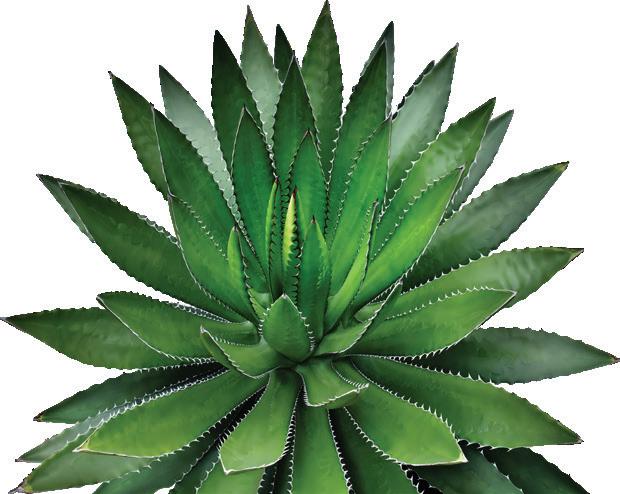

snwa .com
REBIRTH FROM ASHES:
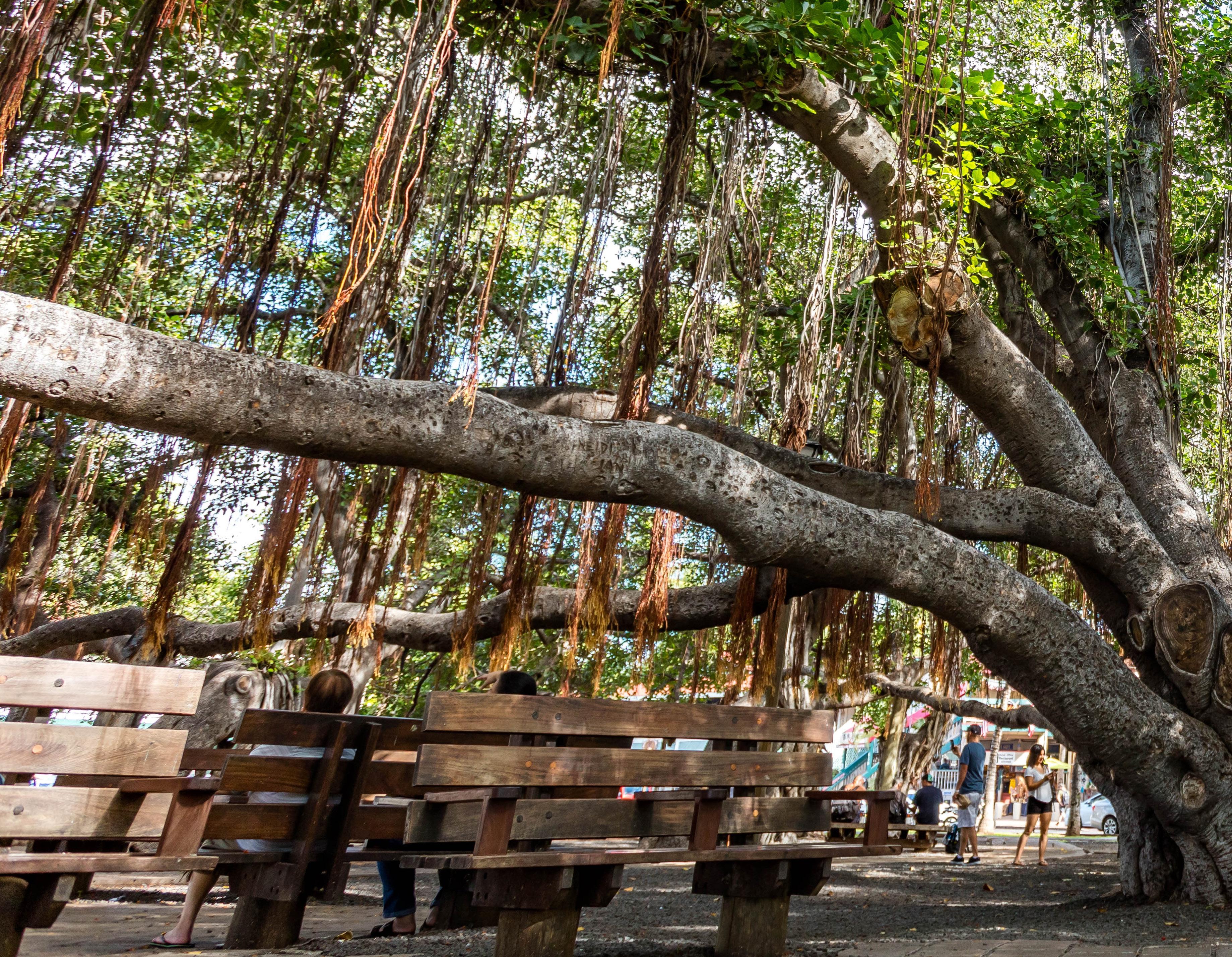
Lahaina’s Banyan tree emerges as a symbol of hope and renewal
In the wake of Lahaina’s devastating wildfire, the survival of 300 trees, including the revered Lahaina square banyan tree and ancient Ulu tree, both offer a glimmer of hope amidst the ashes. Arborists closely monitor the banyan’s recovery, observing signs of new growth, employing innovative wireless sensors to track progress and daily watering rituals. Despite many challenges community-driven efforts endure.
As a testament to resilience, the ancient ulu tree, standing at 250
years old, bore witness to Lahaina’s history until the flames ravaged its trunk, leaving it charred. However, through the innovative work of UH-Hilo professor, Dr. Noa Lincoln, the tree’s legacy perseveres. Despite the physical devastation, Dr. Lincoln utilizes its genetics to ensure that the spirit of the ulu tree lives on, symbolizing hope and continuity amidst adversity.
Volunteers from Wailea Tree & Landscape, emotionally connected to Lahaina’s 151-year-old banyan
tree, meticulously remove deadwood post-wildfire. Despite the somber atmosphere, their commitment to preserving the tree’s legacy shines through. Pruning efforts, overseen by Maui County Arborists Committee Chairman Duane Sparkman, aim to rejuvenate the scorched landmark. Collaborative support from local entities like Brothers Landscaping Services and individuals like Jonny Klassen bolsters restoration efforts. Future plans involve grafting limbs to revitalize the banyan’s footprint, Green Pages, Summer, 2024
12

symbolizing resilience and community unity.
As Lahaina grapples with its altered landscape and lost heritage, the banyan’s resilience becomes a testament to the town’s strength and potential for rejuvenation. Amidst the charred remnants, signs of life emerge, promising a future where Lahaina’s lush greenery thrives once more. Each new sprout and every drop of water reaffirms the community’s commitment to restoring Lahaina’s natural beauty, ensuring
its legacy endures for generations to come. For further inquiries, please contact Staff Writer Matthew Thayer at mthayer@mauinews.com
As a proud supporter of Maui’s community, Star Nursery remains committed to standing with the resilient people of Lahaina during these challenging times. We share in the collective hope of seeing Maui restored to its vibrant and flourishing state, reminiscent of the destination it once was. Together, we believe in the strength of community, perseverance, and the promise of brighter days ahead.




starnursery.com 13 Scan to view the original articles on Mauinews.com:
NEVADA NURSERYMAN

Our staff is dedicated to continuing their education
Navigating the challenges of desert gardening can be daunting, yet we embrace the journey with unwavering enthusiasm, alongside our vibrant community here at Star Nursery. With over 40 years of dedication to sharing knowledge, we’ve cultivated a tradition of expertise and teamwork in the Southwest.
In 2021, our commitment to educating our communities took a significant leap forward as we partnered with the University of Nevada, Reno Extension to introduce the pioneering Certified Nevada Nurserymen course. Led by seasoned desert gardening experts, this course provides quality guidance to our staff and local green thumbs.
Over the span of twelve enriching
weeks, our nurserymen students dig into a diverse array of topics, from plant biology to the intricate art of indoor horticulture. They explore the nuances of our zone 9 habitat, delving into the viability of native flora, resilient cacti, and the delicate balance of our desert biosphere. Students in the course gain valuable expertise in identifying plant diseases and pests, along with developing treatment strategies. Additionally, they acquire practical skills such as pruning, potting, and propagation techniques. We take immense pride in providing our students with expert knowledge, empowering them to assist their communities in desert gardening while also protecting our environment.
In its 3 years of existence, numerous Star Nursery team members have proudly donned their pins as graduates, with many more currently embarking on the journey. In our latest graduating class, we celebrated and encouraged 11 students to continue their journey of learning and sharing their newfound knowledge with their communities.
The next time you wander our aisles, look out for the distinctive blue Nevada pin adorning our team members’ attire—your signal that you’re in the capable hands of a resident Nevada Nurseryman. Don’t hesitate to ask our knowledgeable team members your desert gardening questions. We’re here to help you grow!
14
Green Pages, Summer, 2024
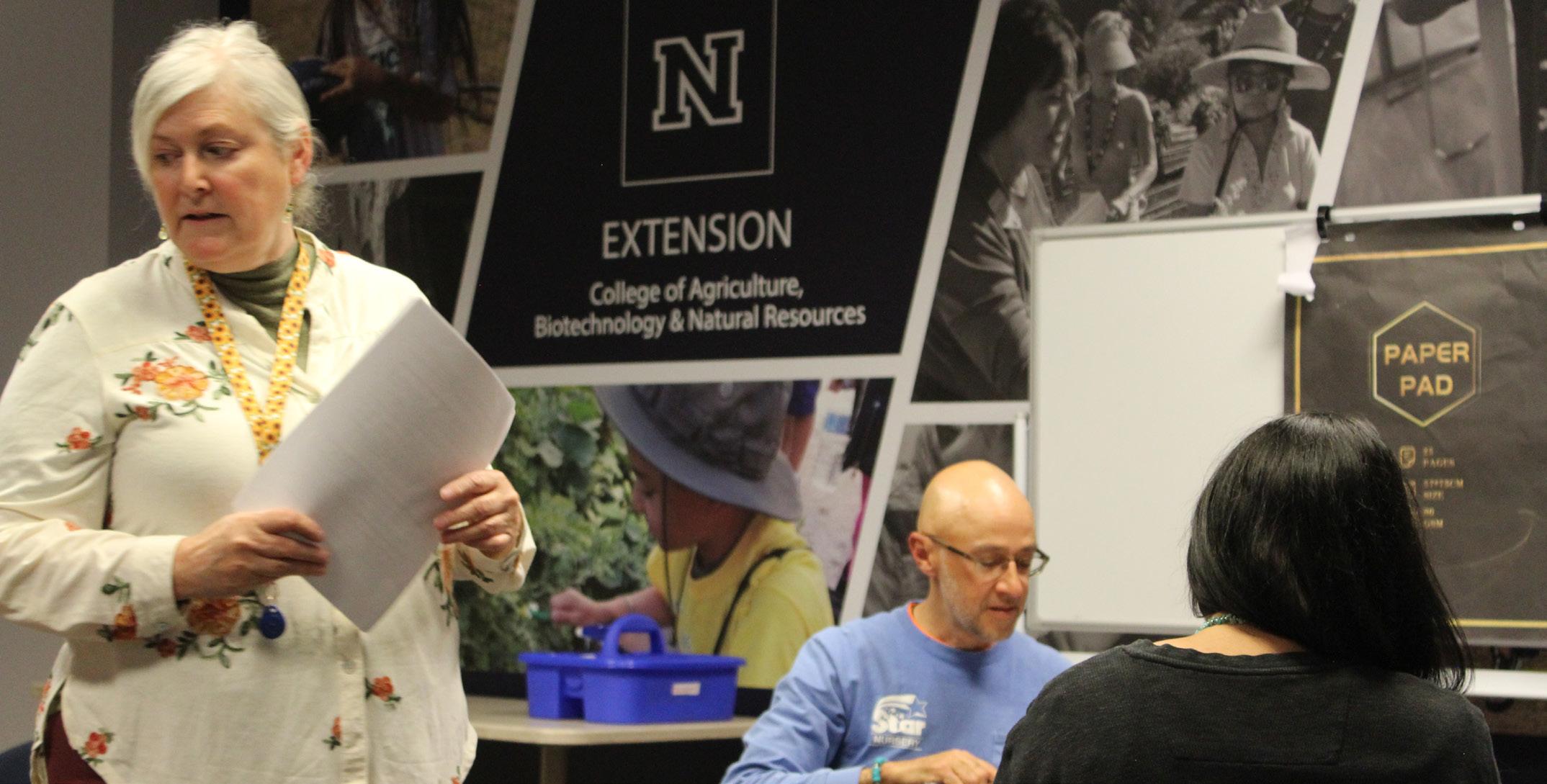




starnursery.com 15
SUMMER COLOR

Drought tolerant flowers for the hottest part of the year
16
Green Pages, Summer, 2024
In the spring months, Nevada has no shortage of blooms when you go outside. It has a plethora of colors ranging from pinks, oranges, yellows, blues, whites, and purples; we get to enjoy nature’s simple wonders. What about in the extreme summer when some of these colors seem to disappear? Here are three exceptions to try this year that will not leave you disappointed.

Purslane ‘ColorBlast’ Series
This bicolored beauty is low maintenance and a perfect choice for June, July, and August to add a burst of color into your garden or pots. The best part about Purslane is it is truly heat and drought tolerant while it is kept in full to part sun. It grows up to six inches in height and will spread up to 20 inches. Also, this special plant attracts hummingbirds and butterflies!

Mecardonia ‘Little Sunshine’ or ‘Gold Dust’
Little Sunshine also known as
Gold Dust is a gorgeous trailing plant with petite yellow flowers that will thrive from May through October. These are great for an accent or in a pot around your landscape as they are known to be rabbit resistant. They prefer full sun and consistent water with good drainage where the soil can stay damp. Its height is only five inches but can be 20 inches wide. If you are looking for easy maintenance for the desert climate, it’s an option to strongly consider.

Angelonia
Angustifolia ‘Summer Snapdragon’
Continually blooming from late spring to early fall, Angelonia comes in a variety of color including purple, blue, pink, and white making it an ideal choice. Summer Snapdragons are distinctive for their slender and long spike form and beautiful attached flowers. These characteristics make it look extremely close to Antirrhinums, true Snapdragons. It reaches heights of 36 inches and about 12 inches wide, great for vertical diversity in your garden. Plus, they can handle wind and sun. Aside from their standout looks, Angelonia has a sweet smell that tend to attract pollinators.
With so many wonderful choices of color, your summer gardens and pots won’t be dull and colorless!
Summer Flowers
In the heart of summer’s embrace, where the sun kisses the earth with grace, blossoms bloom with colors so bright, a dazzling spectacle of pure delight.
Petals unfurl in the warm, gentle breeze, dancing with butterflies at ease, the fragrance of roses in the air, whispers of jasmine, here and there.
Lavender fields stretch far and wide, a purple sea with a calming tide, sunflowers turn their faces high, greeting the sun as it climbs the sky.
Daisies dot the meadows, a cheerful sight, with golden centers, oh so light, lilies by the pond, in stately rows, elegance in repose.
Each bloom, a story of life’s renew, a testament to the morning dew, summer flowers, in their prime, a sonnet, a verse, a rhyme.
So let us cherish this floral array, for summer’s beauty, in our hearts, will stay, and when the petals eventually fall, we’ll remember the summer, the best of all.
~Unknown
starnursery.com 17




bonide.com Kills listed insects on vegetables, berries, citrus, grapes, nuts, and ornamentals Gardening for

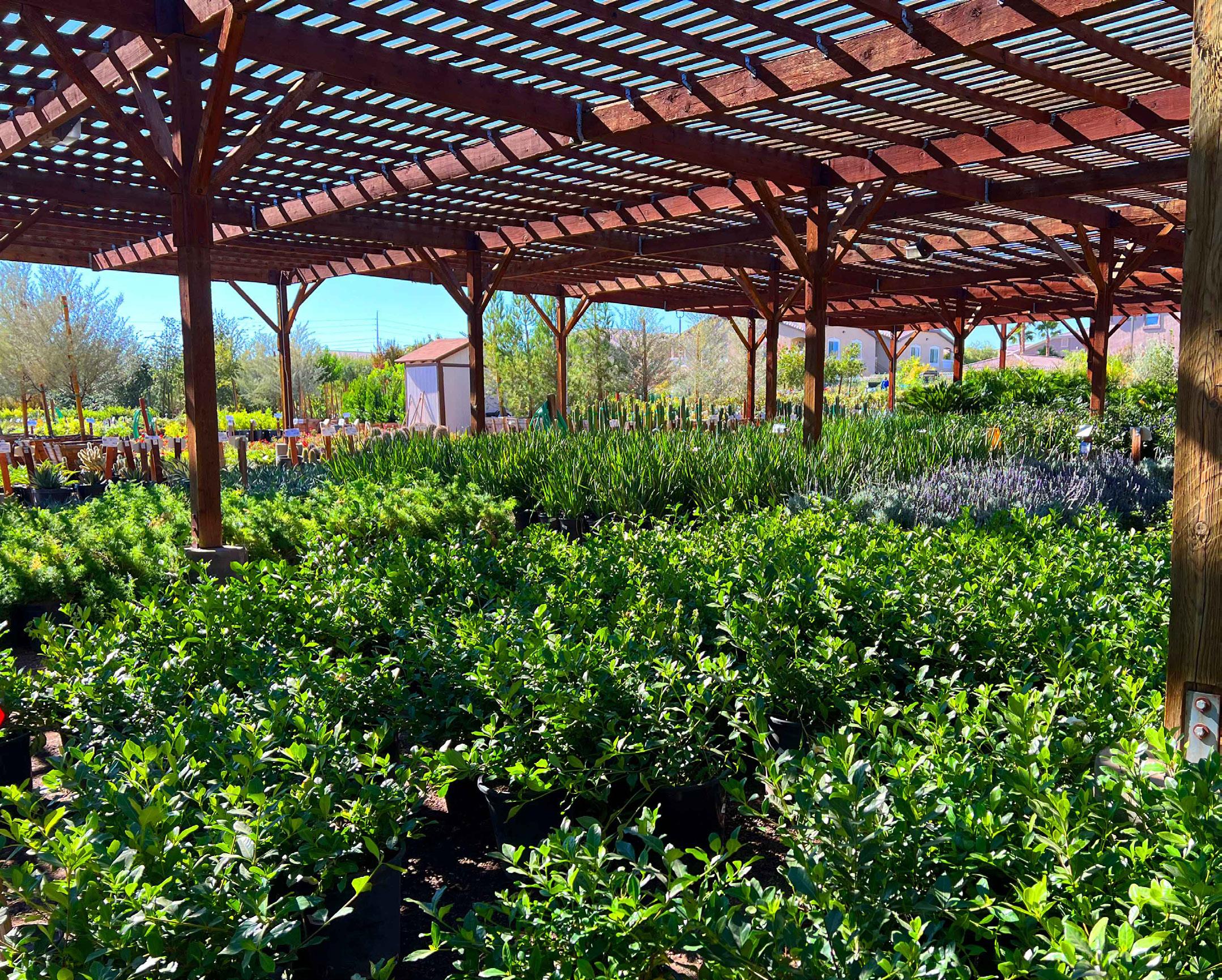



starnursery.com 19 STAY UP TO DATE! FOLLOW US ON SOCIAL MEDIA AND SUBSCRIBE TO OUR WEEKLY NEWSLETTER. @STARNURSERYLV @STARNURSERYDRQ @STARNURSERYINC
EXPLORING LAWN ALTERNATIVES

A desert gardener’s guide to ground covers
20
Green Pages, Summer, 2024
Tired of the same old desert lawn routine? We hear you. Desert gardening is all about making smart choices, and that includes rethinking the traditional lawn. Let’s explore ground cover alternatives that not only bring a burst of color to your landscape but also save you water and effort.
Blooming Ground Covers:
Blooming ground covers not only create a vibrant carpet of greenery bursting with color, but they also act as irresistible magnets for pollinators. By inviting these essential visitors to your garden, you’re not just cultivating beauty; you’re fostering a thriving ecosystem right in your own backyard.
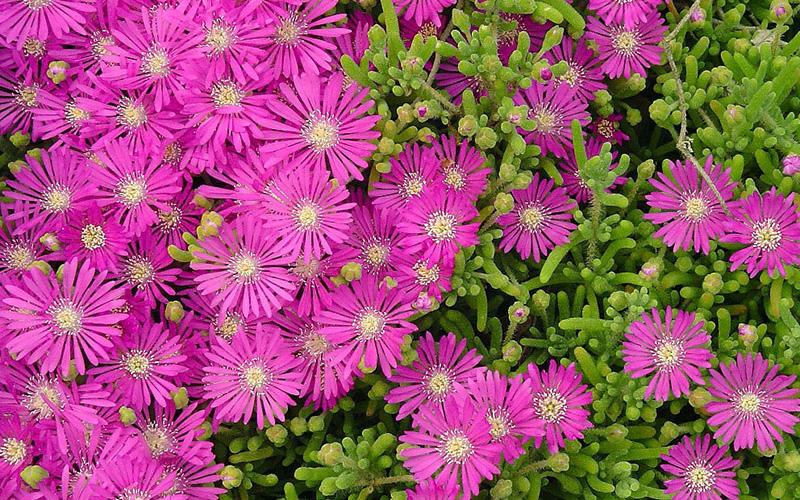

1. Desert Ice, Ice Plant:



About: Aptly named, the Ice Plant (Delosperma ‘Desert Ice’) is well-adapted to desert climates, showcasing fleshy leaves that store water, reducing water loss.
Care Tips: Thrives in well-draining soil. Water moderately during the growing season. Trimming after blooming encourages new growth.
2. Rocky Point Ice Plant:
About: This variety (Delosperma ‘Rocky Point’) boasts succulent leaves and vivid flowers, an adaptation to conserve water in arid environments
Care Tips: Flourishes in full and partial sun. Allow the soil to dry between watering to mimic its natural habitat.
3. Hearts & Flowers:
About: Known for its heart-shaped leaves, the Hearts & Flowers (Calandrinia grandiflora) is not just visually charming but also thrives in arid conditions.
Care Tips: Does best in morning sun and afternoon shade. Flourishes in fertile soil with good drainage. Regular watering during the growing season promotes healthy growth.
4. Carpet Roses:
About: Renowned for their hardiness, Carpet Roses (Rosa ‘Carpet’) demonstrate resilience in various conditions. Their adaptive features make them a robust choice for desert landscapes, adding both beauty and durability.
Care Tips: Thriving in well-draining soil, Carpet Roses appreciate moderate watering. Regular pruning helps maintain their shape and encourages healthy flowering.
5. Gazania:
About: Gazania (Gazania spp.) stands out for its exceptional drought tolerance, making it a perfect fit for water-wise landscaping.
Care Tips: Plant in well-draining soil, and water sparingly. Gazania’s resilience is best preserved by allowing the soil to dry between watering. 1. 4. 5. 2. 3.
starnursery.com 21
Ground Cover Shrubs:
For those who desire a more structured and textured ground cover, shrubs provide a sturdy and low- maintenance option.

1.
1. Australian Racer:

2.

3.
About: Known for its rapid growth, Australian Racer (Westringia ‘WES03’) offers a structured and textured ground cover option. Its sturdy nature makes it an excellent choice for those seeking a more organized landscape.
Care Tips: Plant in full sun. Regular pruning helps maintain its shape and encourages healthy growth.
2. Buffalo Juniper:
About: Buffalo Juniper (Juniperus sabina ‘Buffalo’) presents a dense and resilient ground cover option, bringing texture to your landscape. Its adaptability to various soil types makes it a versatile choice for low-maintenance gardening.
Care Tips: Adaptable to various soil types. Water regularly during the growing season to establish strong roots.
3. Desert Carpet Acacia:
About: As a ground cover shrub, Desert Carpet Acacia (Acacia redolens) is prized for its resilience in arid environments.
Care Tips: Plant in well-draining soil. Water deeply but infrequently once established for optimal growth.
Ground Cover Herbs:
Bring fragrance and utility to your lawn with these low-growing herbaceous options.

1.

3. 2.


4.
1. Creeping Rosemary:
About: Creeping Rosemary (Rosmarinus officinalis ‘Prostratus’) serves as both a fragrant herb and a low-growing ground cover. Its cascading growth pattern adds charm while providing a useful culinary herb.
Care Tips: Requires well-draining soil. Trim after flowering to maintain a tidy appearance.
2. Thyme:
About: Thyme (Thymus spp.) releases aromatic oils when crushed. Its low-growing nature makes a great addition to pathways and borders.
Care Tips: Thrives in full sun. Allow the soil to dry between waterings. Trim regularly to encourage bushiness.
3. Oregano:
About: Oregano (Origanum vulgare) adds fragrance and utility to your lawn as a low-growing herbaceous ground cover. Beyond its culinary uses, it contributes to a diverse and textured landscape.
Care Tips: Plant in fertile, well-draining soil. Water moderately and harvest regularly to promote growth.
22 Green Pages, Summer, 2024
4. Prostrate Germander:
About: Germander (Teucrium prostrata), when crushed, releases aromatic oils, adding a sensory dimension to your garden.
Care Tips: Flourishing in fertile soil with good drainage, Germander requires regular watering during the growing season. Pruning helps maintain its compact form. Plant in full sun to partial shade.
New Ground Covers:
Here’s some additional innovative options that bring a fresh perspective to ground covers.



1. Kurapia:
About: Kurapia (Lippia nodiflora) stands out as an innovative ground cover, known for its drought tolerance and low-maintenance characteristics. Its ability to thrive with minimal water makes it an eco-friendly choice.
Care Tips: Drought-tolerant and low-maintenance. Water sparingly once established.
2. Micro Clover:
About: Micro Clover (Trifolium repens var. Pipolina) introduces a fresh perspective to ground covers. With adaptability to various soil types, it brings a lush, green carpet to your lawn.
Care Tips: Well-adapted to various soil types. Requires moderate watering.
3. Dichondra:
About: Dichondra (Dichondra spp.) offers a new and innovative ground cover option. Its trailing and unique foliage brings a modern touch to your landscape.
Care Tips: Plant in well-draining soil. Keep the soil consistently moist but not waterlogged.

Transforming your lawn with alternative ground covers not only adds aesthetic diversity but can also contribute to a sustainable landscape. Consider the unique characteristics and care requirements of each ground cover to find the perfect fit for your outdoor space. 1. 2. 3.
starnursery.com 23




Best of Las Vegas for 24 years! Best in Bullhead City and Fort Mohave Arizona Best in Southern Utah Best in Kingman, AZ Thank you for voting us #1 Garden Center in the Southwest!


























































































